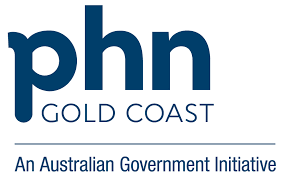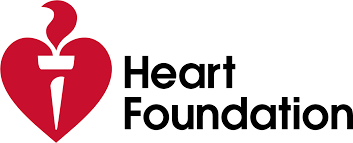Quit Smoking and Assistance with Substance Abuse
What is Addiction?
Addiction is a complex brain disease characterised by compulsive substance use despite harmful consequences.
Over time, repeated substance use can alter neural pathways, affecting judgement, decision-making, learning and memory, and behaviour control.
While physical dependence revolves around the body's need for a substance to avoid withdrawal symptoms, psychological dependence is the need to use a substance for pleasure or to relieve stress.
Why is Smoking So Addictive?
- Immediate Gratification: Smoking provides almost instantaneous effects, reinforcing the behaviour.
- Ritualistic Behaviour: Lighting a cigarette, puffing, and exhaling becomes a deeply ingrained ritual for many smokers.
- Social Aspects: Smoking can be a social activity, making quitting harder, especially if it's associated with socialising or taking breaks.
Nicotine's Role and Its Impact on the Brain
- Brain's Reward System: When smoked, nicotine rapidly reaches the brain and releases neurotransmitters like dopamine, which plays a role in mood and pleasure.
- Build of Tolerance: The brain needs more nicotine over time to achieve the same pleasurable effects, leading to increased consumption.
- Withdrawal Symptoms: As nicotine leaves the body, a smoker may experience irritability, anxiety, difficulty concentrating, and cravings, pushing them to smoke again.
Other Substances and Their Effects on the Brain and Body
- Alcohol:
- Affects the brain's reward system, similar to nicotine.
- Slows down brain activity, impairing judgement, coordination, and speech. Long-term abuse can lead to permanent brain damage.
- Cocaine:
- Stimulates the brain to release a large amount of dopamine, leading to intense feelings of pleasure.
- Repeated use can change the brain's reward system, increasing cravings and dependency.
- Opioids (like heroin, morphine, and prescription pain relievers):
- Bind to opioid receptors in the brain, reducing the perception of pain.
- Over time, higher doses are needed to achieve the same pain-relieving effects, leading to dependency.
- Overdose can depress the respiratory system and be fatal.
- Cannabis (Marijuana):
- Contains delta-9-tetrahydrocannabinol (THC), which impacts memory, pleasure, movements, concentration, and sensory time perception.
- Regular use during teenage years can impair brain development and affect learning and memory.
- Hallucinogens (like LSD and PCP):
- Alter perception, thoughts, and feelings, leading to hallucinations.
- Can interfere with the brain's serotonin system, which regulates mood, sensory perception, and body temperature.
Impact of Smoking and Substance Abuse
Short-term Effects
- Immediate changes in blood pressure and heart rate.
- Reduced appetite for some substances or an increased appetite in the case of substances like marijuana.
- Altered state of consciousness, affecting judgement, coordination, and reflex responses.
Long-term Effects
- Weakening of the immune system making the body more susceptible to infections.
- Nutritional deficiencies leading to weight loss and deteriorated health.
- Compromised lung function, leading to breathing issues and reduced stamina.
Respiratory Problems
- Smoking-related Respiratory Issues:
- Chronic bronchitis: inflammation of the bronchial tubes.
- Emphysema: damage to the air sacs in the lungs, causing breathlessness.
- Chronic Obstructive Pulmonary Disease (COPD): a group of diseases causing airflow blockage.
- Substance Abuse-related Respiratory Issues:
- Inhalants can cause asthma and bronchitis.
- Smoking substances other than tobacco, like marijuana, can lead to respiratory problems similar as cigarette smoking.
Cancers
- Tobacco and Cancers:
- Lung cancer is the most commonly associated with smoking.
- Other related cancers: throat, mouth, oesophagus, bladder, kidney, liver, stomach, pancreas, colon, and cervix.
- Substance Abuse and Cancers:
- Alcohol is linked to breast, throat, oesophagus, liver, and colon cancer.
- Some studies suggest that marijuana smoking can lead to testicular and lung cancer.
Cardiovascular Diseases
- Smoking and Heart Diseases:
- Nicotine raises blood pressure and heart rate, putting strain on the heart.
- Smoking damages blood vessels, leading to plaque (atherosclerosis) buildup, increasing the risk of heart disease and stroke.
- Substance Abuse and Heart Diseases:
- Cocaine can cause heart attacks, even in young users.
- Methamphetamine use can lead to rapid heart rate and elevated blood pressure, increasing the risk of a heart attack.
Mental Health Implications
- Depression and Anxiety: Substance abuse can lead to mood disorders, exacerbating feelings of sadness or hopelessness.
- Psychosis: Some substances, especially hallucinogens and methamphetamine, can induce psychotic episodes.
- Cognitive Impairments: Chronic use can affect memory, attention, and problem-solving capabilities.
Social and Economic Implications
- Broken Relationships: Substance abuse often strains relationships with loved ones.
- Economic Strain: Acquiring substances can be costly and lead to job loss and financial hardships.
- Legal Issues: Possession and use of many substances can lead to legal consequences, including imprisonment.
Importance of Quitting Smoking and Overcoming Substance Abuse
Quitting smoking and overcoming substance abuse are pivotal steps towards achieving a healthier and more fulfilling life. Here's why:
- Physical Health: Ceasing the intake of harmful substances allows the body to heal and reduces the risk of diseases like cancer, respiratory disorders, and cardiovascular problems.
- Mental Well-being: Overcoming addiction improves mental health, reducing symptoms of anxiety, depression, and cognitive impairments associated with substance use.
- Economic Benefits: Once spent on purchasing harmful substances, money can be redirected towards more constructive and rewarding pursuits.
- Improved Relationships: Substance abuse often strains personal relationships. Quitting can pave the way for mended relationships and deeper connections.
- Enhanced Quality of Life: Without the burden of addiction, individuals often find a renewed sense of purpose and enjoy better sleep, improved energy, and a clearer mindset.
- Longevity: Simply put, quitting harmful substances can extend one's lifespan.
- Social Contributions: An individual free from addiction is more likely to contribute positively to society, be it through work, community service, or familial roles.
Steps to Quit Smoking
Preparation: Recognizing the Need to Quit
- Self-reflection
- Educate Yourself
- Setting a Quit Date
Strategies and Aids
- Nicotine Replacement Therapy (NRT):
- Products like nicotine gum, patches, inhalers, and lozenges can help reduce withdrawal symptoms.
- They deliver nicotine in controlled amounts to ease the quitting process.
- Prescription Medications:
- Drugs like Bupropion (Zyban) and Varenicline (Chantix) can help reduce cravings and withdrawal symptoms.
- Behavioural Therapies:
- Cognitive-behavioural therapy (CBT) can assist in identifying triggers and developing coping strategies.
- Group therapy or counselling can offer support and shared experiences.
Overcoming Triggers and Cravings
- Recognise situations, moods, or routines that prompt the urge to smoke.
- Initially, it might help to avoid triggers. For unavoidable triggers, substitute smoking with another activity.
- When a craving hits, wait for a few minutes. The urge usually diminishes with time.
- Physical activity can reduce the intensity of cravings.
Importance of a Support System
- Lean on Loved Ones
- Join Support Groups
- Stay Accountable
- Seek Professional Help
Assistance with Substance Abuse
Recognising the Signs of Substance Abuse
- Physical Signs: Sudden weight changes, bloodshot eyes, irregular sleep patterns, unexplained injuries, or impaired coordination.
- Behavioural Signs: Neglect of responsibilities, decreased performance at work or school, sudden change in friends or hangouts, secretive behaviours, and financial problems.
- Psychological Signs: Unexplained mood swings, irritability, bursts of energy followed by lethargy, paranoia, or lack of motivation.
Counselling and Therapy
- Cognitive-Behavioral Therapy (CBT):
- Focuses on identifying and rectifying maladaptive behaviours and thoughts.
- Helps patients recognise triggers, develop coping mechanisms, and change harmful thought patterns.
- Contingency Management:
- Provides tangible rewards for positive behaviours such as remaining substance-free.
- Helps in reinforcing positive behaviour changes during the recovery process.
- Motivational Enhancement Therapy:
- Designed to tap into an individual's motivations and reasons for change.
- Often used in the initial stages of treatment to galvanise the commitment to recovery.
Medications to Treat Substance Abuse
- Opioids: Methadone, Buprenorphine, and Naltrexone help suppress withdrawal symptoms and reduce cravings.
- Alcohol: Disulfiram, Acamprosate, and Naltrexone can assist individuals in reducing or quitting alcohol consumption.
- Nicotine: Apart from NRT, medications like Bupropion and Varenicline can aid in smoking cessation.
- Note: Medications are often most effective when combined with counselling and behavioural therapies.
Rehabilitation Centers
- Structured Environment: Rehab centres provide a temptation-free environment conducive to recovery.
- Multidisciplinary Approach: Patients can access medical professionals, therapists, counsellors, and support groups—all in one place.
- Peer Support: Interacting with others on the path of recovery can provide mutual motivation and understanding.
- Skill Building: Rehabilitation centres often provide training on essential life skills to help reintegrate patients into society.








